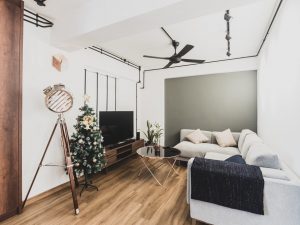Renovating for Rent: Tips for Maximizing Rental Appeal
In Singapore’s bustling rental market, property owners are constantly seeking ways to enhance their properties to attract tenants and maximize rental yields.
Renovating a property with the aim of renting it out requires careful planning and strategic decisions.
This article aims to provide valuable insights and tips for property owners looking to renovate their properties for rent, tailored specifically for the Singaporean market.
Understanding the target market
When embarking on a renovation project for rental purposes, it’s crucial to delve into the nuances of the target market.
Understanding the demographics and preferences of potential renters can provide invaluable guidance in tailoring the renovations to meet their specific needs and desires.
Moreover, considering location-specific factors such as nearby amenities and attractions can offer profound insights into the types of tenants likely to be attracted to the property.
Target audience: young families with kids
Properties in close proximity to branded primary schools often appeal to young families with kids of school-going age. These families prioritize accessibility to reputable educational institutions and seek residences that offer a conducive environment for their children’s growth and development. Renovations that cater to the needs of families, such as child-friendly spaces and ample storage solutions, can enhance the property’s appeal to this demographic.
Target audience: young professionals and non-married expats
Conversely, properties situated within the CBD tend to draw interest from young professionals and expatriates seeking convenience and proximity to their workplace.


208 Jalan Eunos ($20,000) by Commute Design Studio
Here, renovations can be strategically geared towards enhancing the luxuriousness of the bedroom and bathroom areas, as these are spaces where tenants often seek comfort and relaxation after a busy day.
With the rise of remote work trends, it’s also essential to ensure that these properties offer a dedicated space for working from home. Some landlords may choose to provide furniture for these workspaces, while others may leave it to the tenant to furnish as they see fit. Regardless of which approach you choose to take, there are several key considerations to keep in mind in response to the increasing prevalence of remote work.
For landlords who opt not to provide furniture, it’s crucial to at least ensure that there is a space available that the tenant can utilize as a work area. In cases where the property is a studio apartment or a one-bedroom unit without a separate room for a home office, creative renovation solutions can be employed.
This might involve strategically arranging furniture to create a designated work zone within the living area or utilizing room dividers to delineate a workspace from the rest of the living space. By maximizing the available space and considering the needs of tenants who work remotely, landlords can ensure that the property remains attractive and functional for a diverse range of renters.
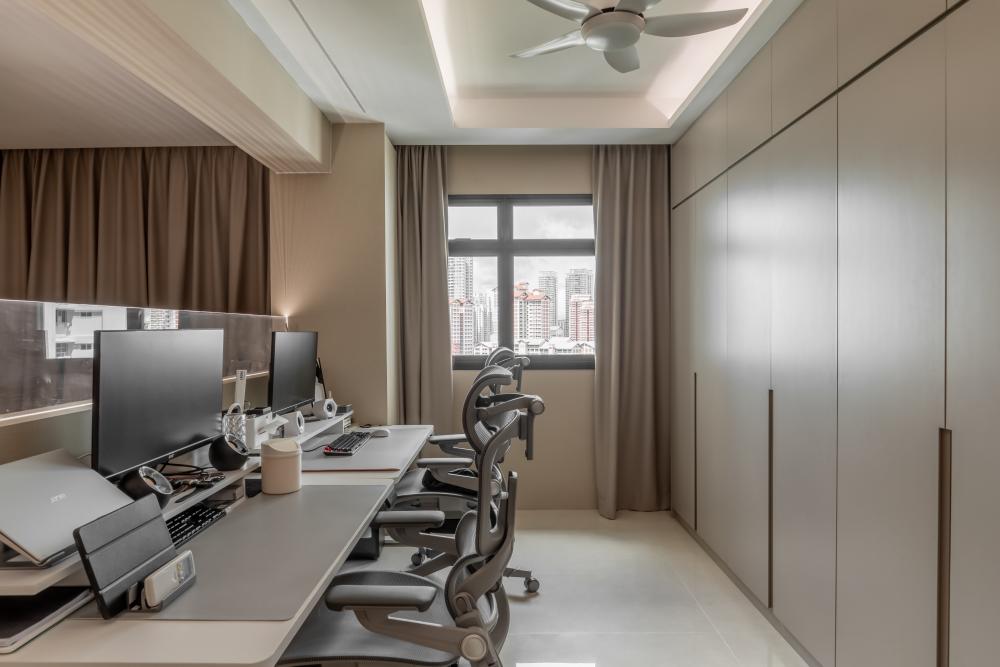

Teck Ghee Vista ($30,000) by Full House Building Construction
For landlords who do provide furniture for home offices, it’s essential to prioritize ergonomic design and functionality. Opting for adjustable desks and chairs, adequate storage solutions, and ergonomic accessories can enhance comfort and productivity for tenants working from home. Additionally, ensuring ample natural light in these workspaces can contribute to a conducive and energizing environment for remote work activities.
For landlords who do provide furniture for home offices, it’s worth investing in durable pieces that can withstand wear and tear. You don’t necessarily need to purchase brand-name items, but selecting furniture that is sturdy and functional for your tenant is essential. Investing in quality furniture demonstrates a commitment to tenant satisfaction and can contribute to positive tenant experiences.
If you want to differentiate your property and attract tenants, however, you may consider investing in items such as adjustable desks and chairs, as well as other ergonomic accessories. These additions can enhance the WFH environment and offer tenants greater comfort and productivity. In competitive rental markets where multiple units may be available for rent within the same development, offering a superior WFH experience can be a compelling selling point.
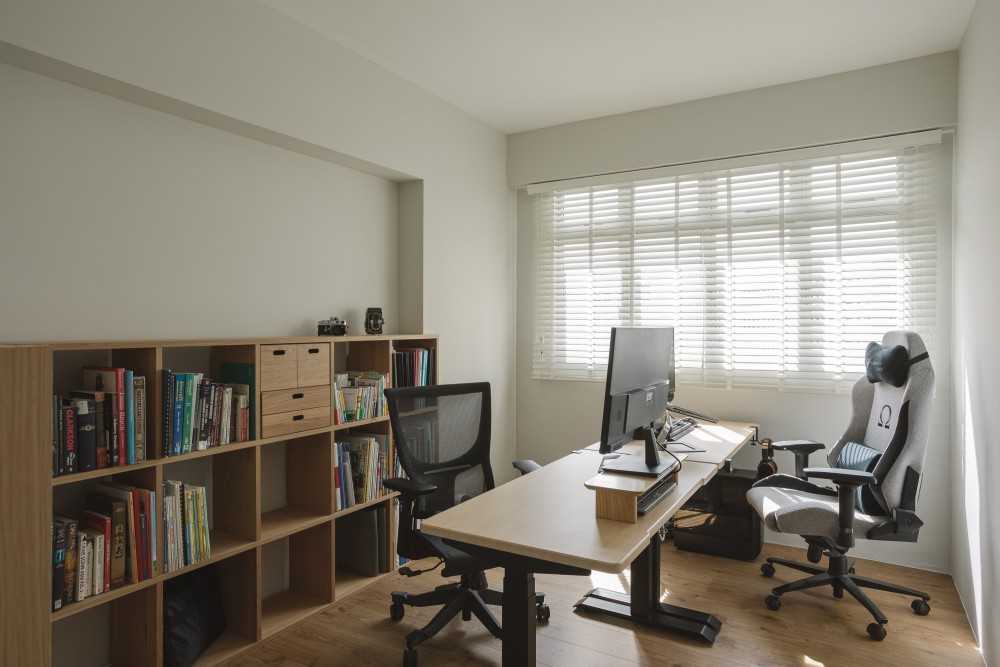

528C Costa Ris ($51,000) by The Interior Lab Pte Ltd
Target audience: expat families with kids
Properties located in the vicinity of international schools, such as the French School in Kovan or the American School in Woodlands, are particularly attractive to expatriate families. These families prioritize access to quality international education for their children and seek residences that offer a cosmopolitan lifestyle and vibrant community.


City Square Residences ($73,000) by Space Atelier Pte Ltd
To cater to the preferences of expatriate families, landlords should prioritize creating residences with ample living space that is both sizeable and comfortable. Expatriate families place a premium on flexible living spaces that seamlessly cater to various activities, including work, leisure, and socializing. Unlike other demographics, big bedrooms and bathrooms are of lesser importance to expat families. When allocating space, it’s essential to prioritize generous living areas that can comfortably accommodate gatherings with friends and family.
On top of that, landlords can also consider investing in more storage if they’re intending to rent to expat families with children. From toys and games to school supplies and sports equipment, having ample storage space is essential for keeping the home organized and clutter-free. Incorporating built-in storage solutions such as cabinets, closets, and shelving units can help expat families efficiently manage their belongings and maintain a tidy living environment.
With the transient nature of expatriate life, providing sufficient storage allows families to store seasonal items or belongings that may not be needed year-round. This flexibility can be particularly valuable for expat families who may need to relocate frequently due to work assignments or other commitments.
Aesthetic considerations
Aesthetic considerations are important when renovating a property for rent, as they directly influence the property’s attractiveness to potential tenants. Opting for a neutral and universally appealing design is advisable, as it sets the stage for broad appeal and allows tenants to envision themselves living in the space. Neutral color palettes, clean lines, and understated decor create a versatile backdrop that can accommodate a variety of tenant preferences and styles.
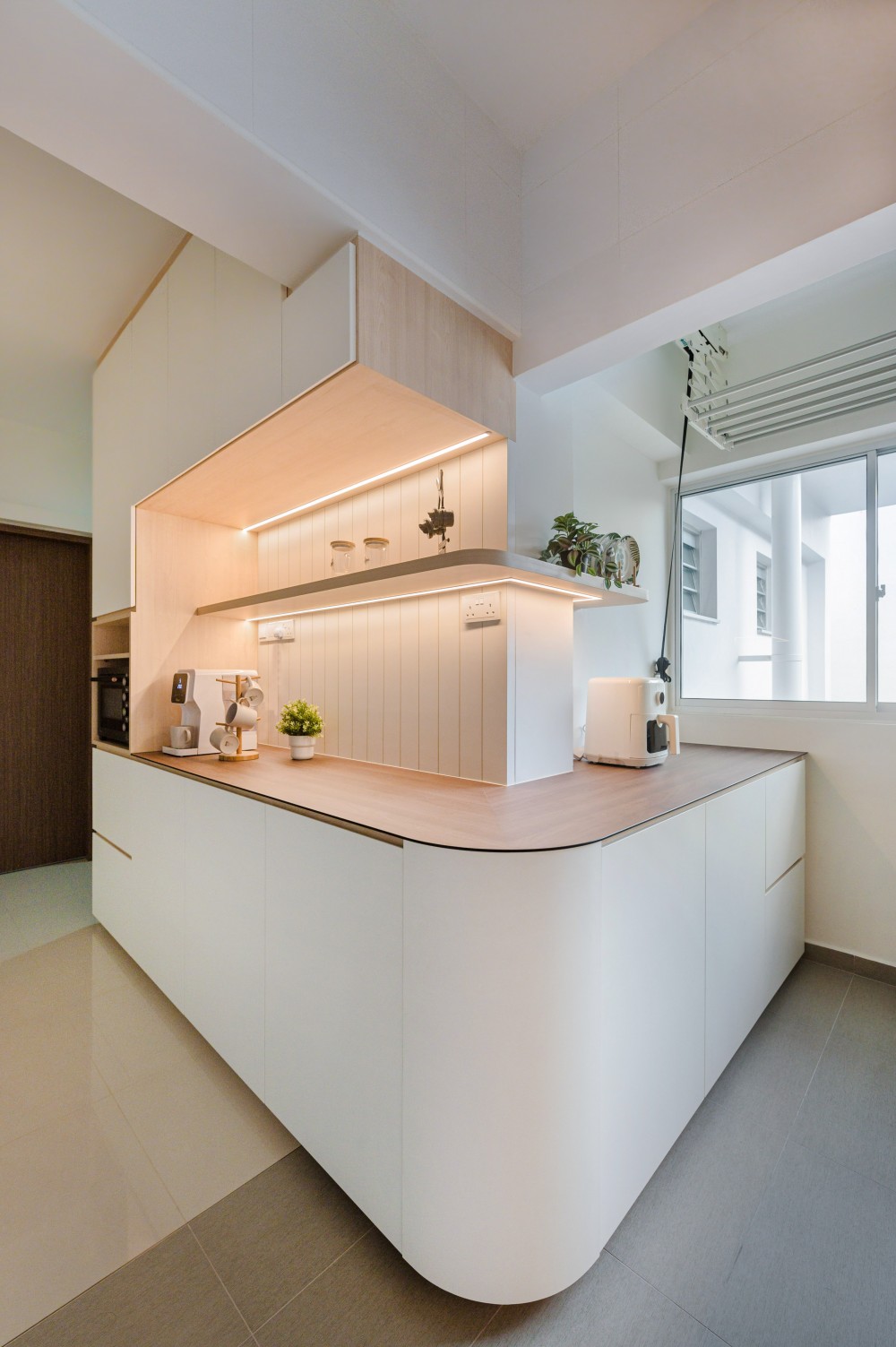

Ubi Grove ($35,000) by Co1 Studio
By avoiding overly personalized aesthetics, landlords provide tenants with a blank canvas upon which they can imprint their own personality and taste. This approach fosters a sense of ownership and allows tenants the freedom to personalize the space according to their individual preferences. Rather than imposing a specific design style, landlords should aim to create a flexible and adaptable environment that can easily be customized to suit the tenant’s lifestyle and aesthetic preferences.
When it comes to decorative items, less is often more. While thoughtful accents can enhance the aesthetic appeal of the property, it’s crucial to strike a balance and avoid overwhelming the space with excessive decor. Landlords should select decorative pieces that are versatile and complementary to the overall design aesthetic, avoiding clutter and maintaining visual harmony throughout the space. This minimalist approach allows tenants to add their own personal touches and create a space that feels like home without feeling constrained by the landlord’s design choices.
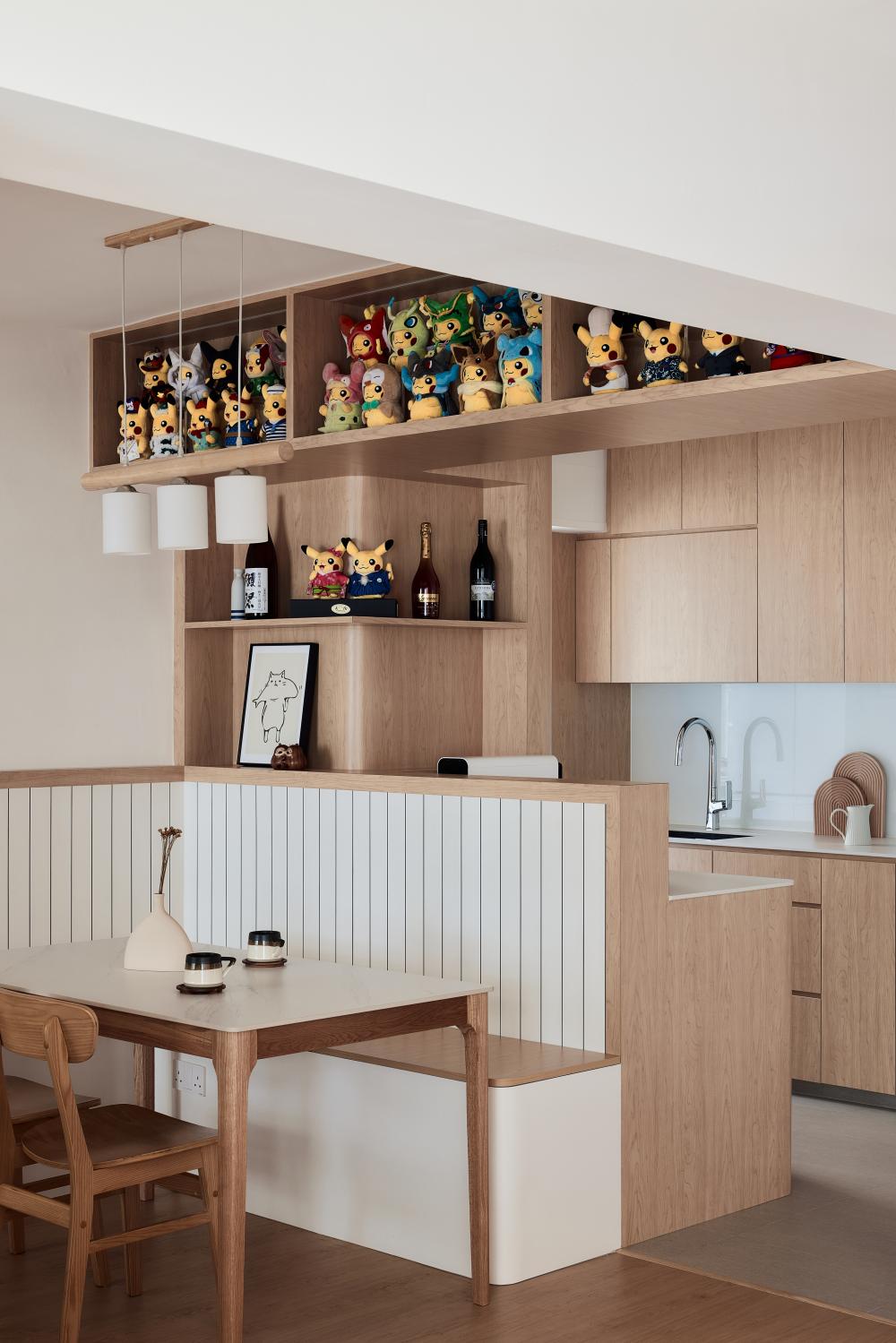

356C Ubi Road ($84,000) by Starry Homestead Pte Ltd
Smart home features
Incorporating smart home features can significantly elevate the appeal of a rental property, particularly among tech-savvy tenants who prioritize convenience and efficiency in their living spaces. While smart home technologies are by no means necessary, they can serve as a valuable differentiator, particularly in competitive rental markets where multiple units may be available for rent within the same apartment building.
From automated lighting and climate control systems to smart locks and security cameras, these technological enhancements offer a host of benefits for both landlords and tenants. By integrating smart home features into the property, landlords demonstrate their commitment to providing a modern and convenient living environment that meets the evolving needs of today’s renters.
One of the most impactful smart home upgrades is the installation of smart locks, which eliminates the need for physical keys.
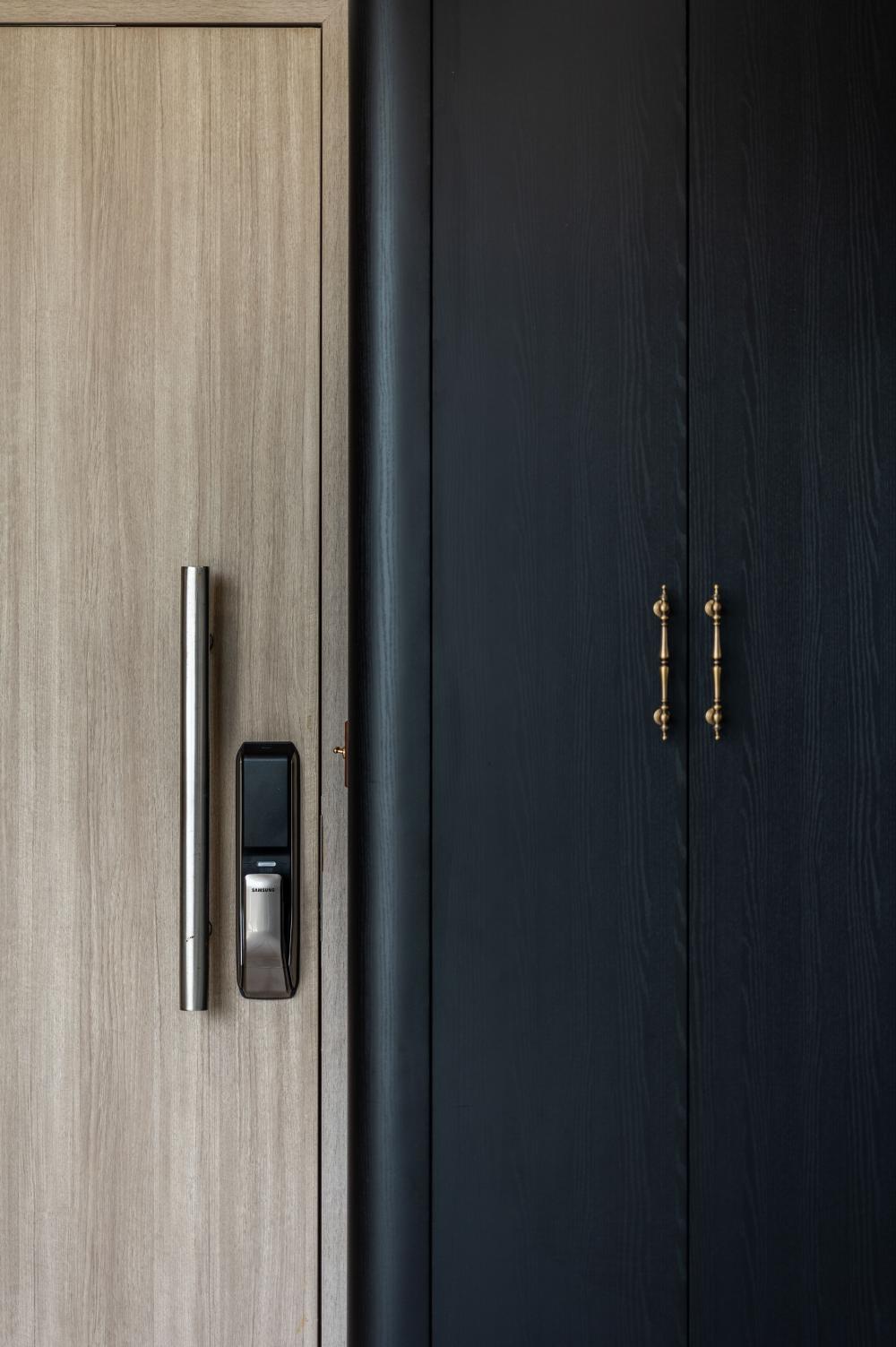

Sol Acres ($119,000) by 9 Creation Pte Ltd
Look at this as a win-win: for the tenant, smart locks enhance their experience and lifestyle by providing seamless entry and remote access capabilities. For the landlord, smart locks also provide practical benefits. With smart locks, landlords can eliminate the hassle of managing physical keys and the potential security risks associated with lost or stolen keys.
While smart home features may represent an initial investment for landlords, they can ultimately pay dividends by enhancing the property’s rental appeal and future-proofing the home. By staying ahead of technological trends and offering cutting-edge amenities, landlords can attract quality tenants and command premium rental rates for their properties.
Budgeting and cost management
Effective budgeting and cost management are foundational elements of renovating a property for rent. Setting a realistic budget and strategically allocating funds based on potential return on investment (ROI) is essential for maximizing profitability and ensuring the renovation project stays within financial constraints.
At the basic level, setting a budget begins with a thorough assessment of the property’s current condition and identifying the areas that require renovation or improvement. Landlords should consider factors such as the age of the property, the extent of necessary renovations, and the target rental market when determining the budget. It’s essential to be realistic and account for unforeseen expenses by setting aside a contingency fund.
To go one step further when setting your budget, also consider the ROI that you’ll get out of your renovation. This holistic approach ensures that you’re not just focused on minimizing expenses but also maximizing the rental income you can command in the market. Instead of aiming to spend as little as possible, evaluate how your renovation expenses align with the potential rental value of the property. By prioritizing renovations that offer a favorable ROI, you can make informed decisions that optimize profitability and maximize the long-term value of your investment.
How to calculate the ROI of your renovation
Calculating the ROI for rental renovations involves a comprehensive assessment of potential rental income compared to the costs of the renovation project. Landlords can follow a systematic approach to evaluate the financial feasibility and potential profitability of their renovation endeavors.
Step 1: Market research
Begin by conducting thorough research on rental listings in the same neighborhood or building. Identify properties with similar size and layout but with newer amenities or renovations. Take note of the rental rates these properties are commanding, as they serve as a benchmark for estimating the potential rental income of your renovated unit.
Step 2: Estimating your (new) rental income
Based on the market research, estimate the potential rental income of your renovated property. Consider factors such as the quality of renovations, amenities, and the overall condition of the property. Aim to set a competitive rental rate that reflects the value-added by the renovations while remaining attractive to prospective tenants.
Step 3: Calculate your ROI
Here’s how to calculate the ROI of your renovations:
ROI = (Increase in annual rental income / total renovation costs) x 100
By plugging in the estimated rental income and total renovation costs, landlords can calculate the ROI percentage. The higher the ROI, the more worthwhile your investment is.
On top of ROI, you can also calculate the time needed to breakeven on your renovation costs.
Breakeven time (in months) = Renovation cost / increase in monthly rental income
Here’s a positive example: if your renovation cost is $5,000 and your increase in monthly rental income is $500, your breakeven time is 10 months.
Given that most property leases are 12 – 24 months, this makes it easy for you to breakeven on your rental income. You’ll break even with just one lease signed.
Here’s a negative example: if your renovation cost is $50,000 and your increase in monthly rental income is $800, your breakeven time is 62.5 months, or 5.2 years.
This means that you’ll need at least 3 tenants (assuming a lease of 2 years) or 6 tenants (assuming a lease of 1 year) to breakeven. Obviously, this is less ideal than the previous scenario with a shorter breakeven time.
A final word on renovating to maximize rental appeal
Renovating a property for rent requires careful consideration and strategic planning.
By understanding the target market, focusing on essential renovations, and making smart design choices, property owners can significantly enhance the rental appeal of their properties.
With the right approach, renovating for rent can not only attract quality tenants but also maximize rental income and long-term profitability in Singapore’s competitive rental market.
Want to check out home renovation projects for more inspiration? Browse interior design ideas on Hometrust, or click the button below to get connected with expert designers!
Renovating soon? Let Hometrust recommend the best interior designers.
If you are reading this, you are probably wondering how you can create your dream home.
Here’s the thing, everyone’s needs and requirements for their home renovation is different. A designer that may work for someone else, may not quite work for you.
At Hometrust, we’re here to help match top rated designers, recommended by past homeowners to you through our data-driven and matching algorithm.
Whether you are looking for partial renovation or a full fledge overhaul, we’ll be able to recommend you top designers to match your renovation requirements and lifestyle.
Recommendations and free and you can simply start by helping us understand your needs below!
Get RecommendationsRenovate safe!
The Hometrust Team



